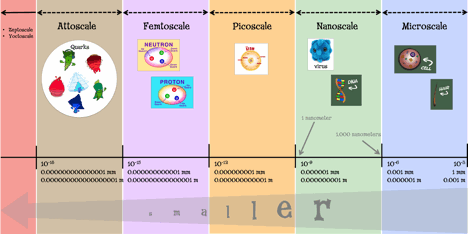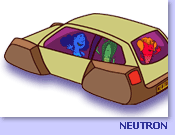

A |
B |
C |
D |
E |
F |
G |
H |
I |
J |
K |
L |
M |
N |
O |
P |
Q |
R |
S |
T |
U |
V |
W |
X |
Y |
Z |
 |
Neutrino |
Fundamental particles that belong to the lepton group. They have no electric charge and do not interact with other particles except through the Weak force. They are very light and travel very fast. There are three kinds: electron neutrino, muon neutrino, and tau neutrino. |


